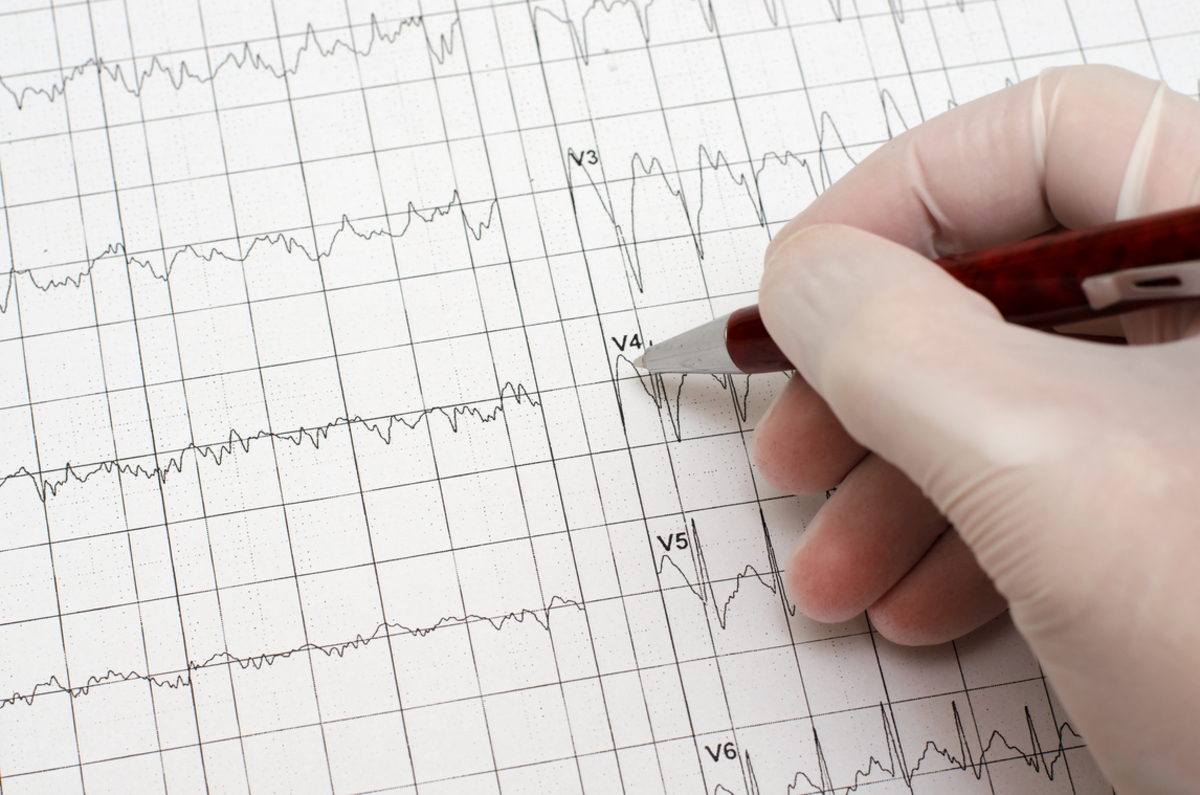Heart disease is one of the leading causes of death all around the world. To lower your risk of dying from heart disease, it is important to get diagnosed early on, before the onset of a heart attack. If you are at a high risk for heart disease, you should be seeing your doctor periodically so they can keep an eye on you, particularly if your lifestyle is not heart-healthy. Getting diagnosed early on can be the difference between life and death, as preventative strategies can help you avoid a heart attack.

If you seem like you are at a high risk for heart disease, these are the five tests a doctor will ask you to participate to confirm a diagnosis of coronary heart disease.
1. Electrocardiogram (EKG)
An EKG is a test in which electrical leads are placed on your body – mostly on your chest, legs and arms – to detect and record the electrical activity of your heart. An EKG records the electrical signals transmitted by heart muscle as a trace on a graph paper.
It is a painless test that can help determine how quickly your heart is beating and whether the rhythm of your heart is stable or irregular. It further shows how strong your heart’s electrical signals are and what the timing of the signals is as they go through the heart. EKGs are able to show whether your heart is showing any signs of damage as a result of coronary heart disease and if you have had a previous heart attack.
2. Stress test
You will be asked to exercise on a treadmill or a bike to make your heart work harder and beat faster during a series of tests so that doctors can evaluate how your heart responds in a "stressful" situation. If you are unable to exercise due to a disability or other reasons, you will instead be given medication that increases your heart rate.
This test is employed because when your heart is racing or beating fast, the muscles of your heart pump harder so that your body gets more oxygen-filled blood. If you have issues in your coronary arteries (the blood vessels that supply the heart muscle with blood) due to a blockage, it will not be able to supply the blood that the heart muscles need.
The stress test can allow doctors to determine whether you have coronary heart disease as you will have an abnormal change in your heart rate or blood pressure, experience shortness of breath, have chest pain, or have abnormal changes in your heart’s electrical activity. During the stress test, you will may be hooked up to electrical leads for an EKG reading while you exercise and in some cases, pictures may be taken of your heart so that doctors can determine how well blood flows around your body.
3. Echocardiogram
An echocardiogram is an imaging technique that employs the use of ultrasound waves to figure out how your heart looks while it beats. This creates a moving picture of your heart and provides valuable information regarding the size and shape of your heart in addition to telling doctors how well your heart is working.
4. Angiogram
An angiogram can produce a picture of the organs and structures that reside in your chest. This includes the heart, lungs, and blood vessels. Doctors are able to see whether any of your coronary arteries are narrow or blocked. Using a local anesthetic, doctors may also insert a small, thin and flexible tube (catheter) in the artery that goes in your arms (or the groin) and is guided to the heart. Then, a dye is injected to the coronary arteries and an X-ray is produced, which can give a lot of information regarding the condition of the arteries and how well your blood flow is through your heart and blood vessels. Doctors can also use angiograms to see if you have heart failure.
5. Blood tests
While it may sound simple, a blood test can tell you a lot about the condition of your heart. Using a blood test, you can determine the amount of fats, cholesterol, sugar and protein that are in your blood. Abnormal levels of these compounds can mean that you are either at risk of coronary heart disease or you already have it. Another thing blood tests can do is see if you have anemia, a condition in which you don’t produce enough red blood cells. This puts you at a higher risk for coronary heart disease. Finally, when you experience a heart attack, that causes some heart muscle cells to die and releases proteins into the bloodstream. Blood tests can determine how much protein is in the bloodstream and if you have high levels of these, you may have had a recent heart attack.
- Budoff, M. J., & Shinbane, J. S. (Eds.). (2016). Cardiac CT imaging: diagnosis of cardiovascular disease. Springer.
- Doris, M., & Newby, D. E. (2016). Coronary CT angiography as a diagnostic and prognostic tool: perspectives from the SCOT-HEART trial. Current cardiology reports, 18(2), 18.
- Danad, I., Szymonifka, J., Twisk, J. W., Norgaard, B. L., Zarins, C. K., Knaapen, P., & Min, J. K. (2017). Diagnostic performance of cardiac imaging methods to diagnose ischaemia-causing coronary artery disease when directly compared with fractional flow reserve as a reference standard: a meta-analysis. European heart journal, 38(13), 991-998.
- Photo courtesy of SteadyHealth


Your thoughts on this